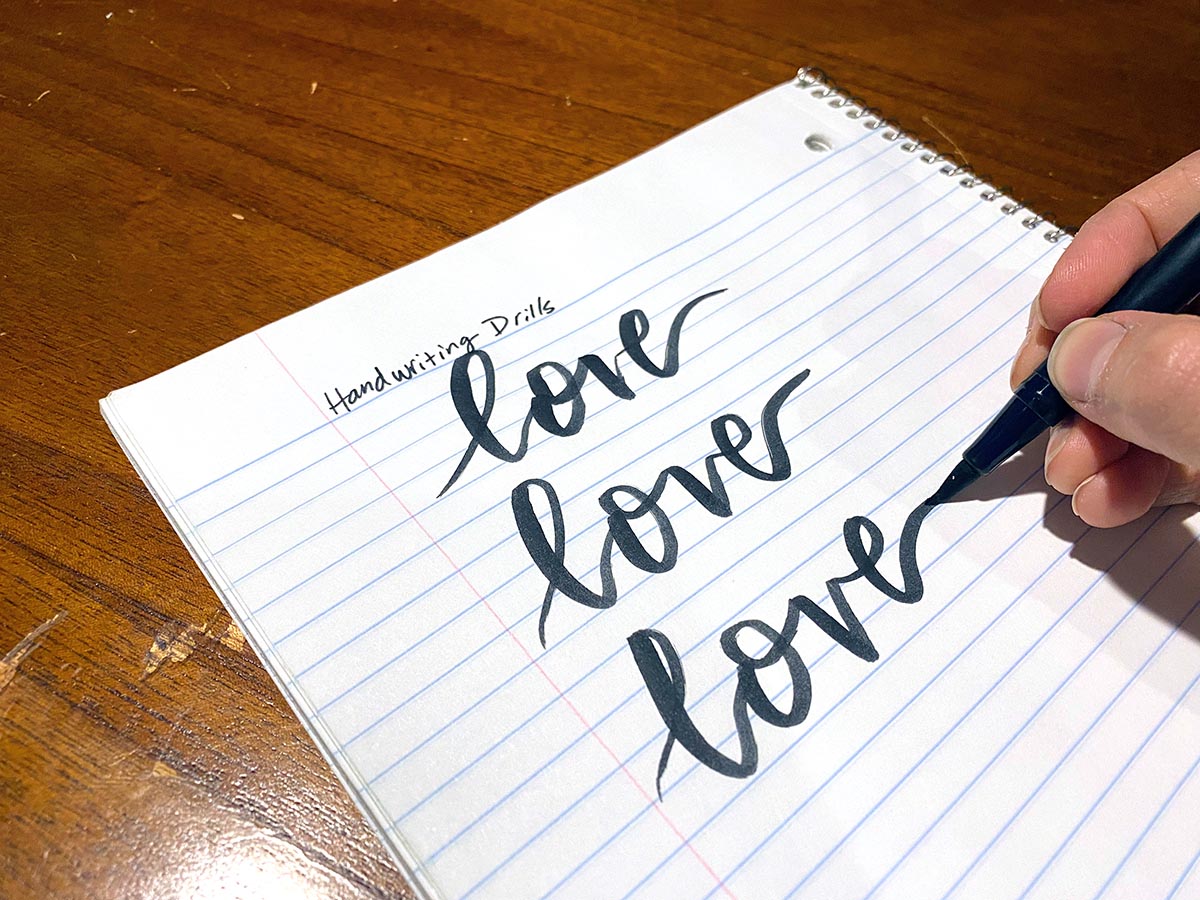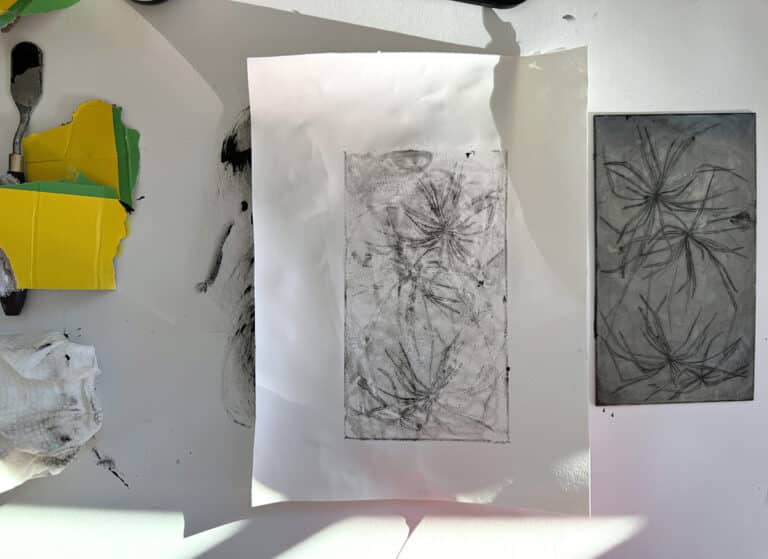It’s the season of love—so let’s talk about love letters in your classroom! In our digital world, handwritten cards and notes are becoming scarce. However, nothing beats the sentiment of a handwritten note. Plus, handwriting is still a key skill our students need to thrive! It enhances fine motor skills, aids with clear communication, cultivates appreciation and kindness, preserves tradition, and builds community. Grab an ink pen and come explore the history of love notes. We’ll dive into how to use them in your art room with calligraphy, cursive, and typography to make learning dreamy and meaningful!
Where did our love story with love letters begin?
Our love story with handwritten treasures dates back centuries. They were a way to communicate raw emotion and intimacy. Much like a piece of art, they also reflected the passions and values of the lovers. While we have grown accustomed to our era of instant communication, there’s a growing nostalgia for the tangible, sentimental, and personal. We see this in the rise of handwritten wedding invitations carefully and beautifully scripted by calligraphers. Calligraphy and cursive writing are experiencing a revival as people enroll in workshops to master these skills. We see calligraphy on home decor, custom shop signs, and graphic brand designs. In embracing the loveliness of handwritten letters and the artistry of calligraphy, we find a noteworthy (pun intended) reminder of the power of personal connection.
Your students will fall head over heels for calligraphy, cursive, and typography with the list of ideas below!
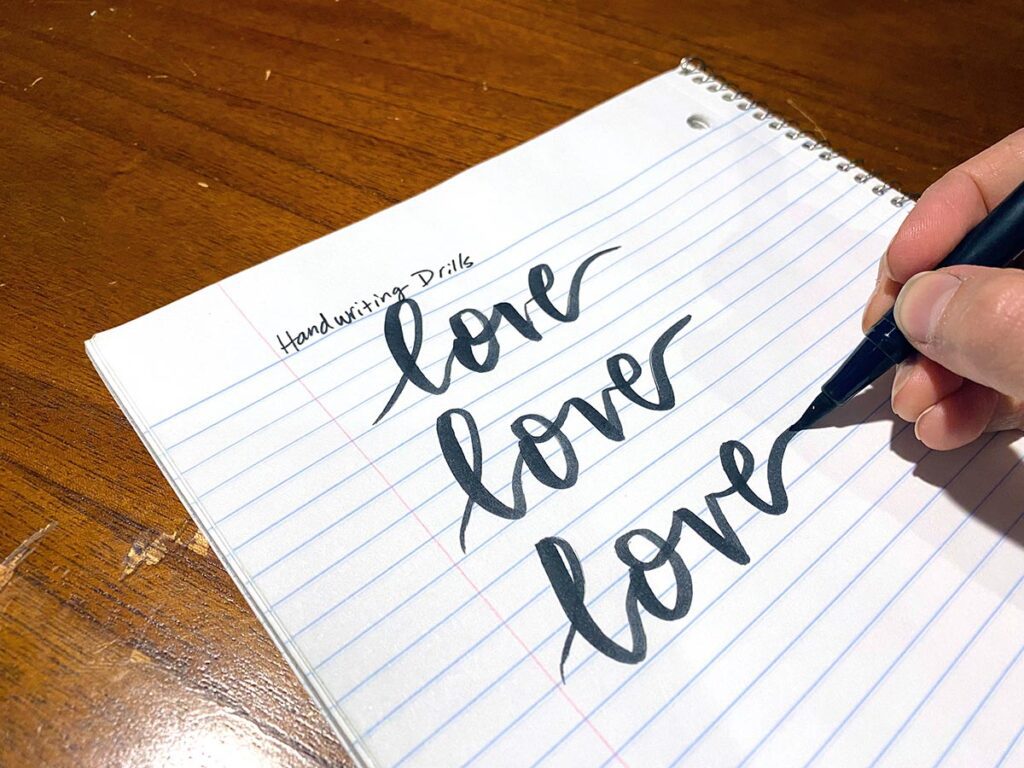
Calligraphy: Skills for Our Students and Their Minds
The angle and pressure at which an ink pen meets the paper’s surface are essential for creating thick and thin strokes in calligraphy. Achieving consistency in letter size, slant, and spacing is a hallmark of a skilled calligrapher. Mastery in calligraphy requires practice and refinement. This teaches students control, sharpens fine motor skills, and encourages students to slow down. Students can still learn these skills without fancy calligraphy pens—imitate the look of calligraphy and double up your downstrokes to make them thicker. Calligraphy isn’t just about beautiful writing—it can also be a calming and peaceful escape from the fast-paced busyness of life. If you desire a calm classroom full of focused students, keep reading for addicting exercises!
Calligraphy Activities:
- Love Letters
Students write a love letter to express their gratitude to a person who is important to them. Use calligraphic elements to add a special touch. This can be with the recipient’s name on the envelope or their signature at the close of the letter. - Affirmation and Encouragement Notes
Students write short, positive messages in calligraphy. This boosts confidence and spreads joy to others. Give these to specific people or post them anonymously on the bathroom mirrors.
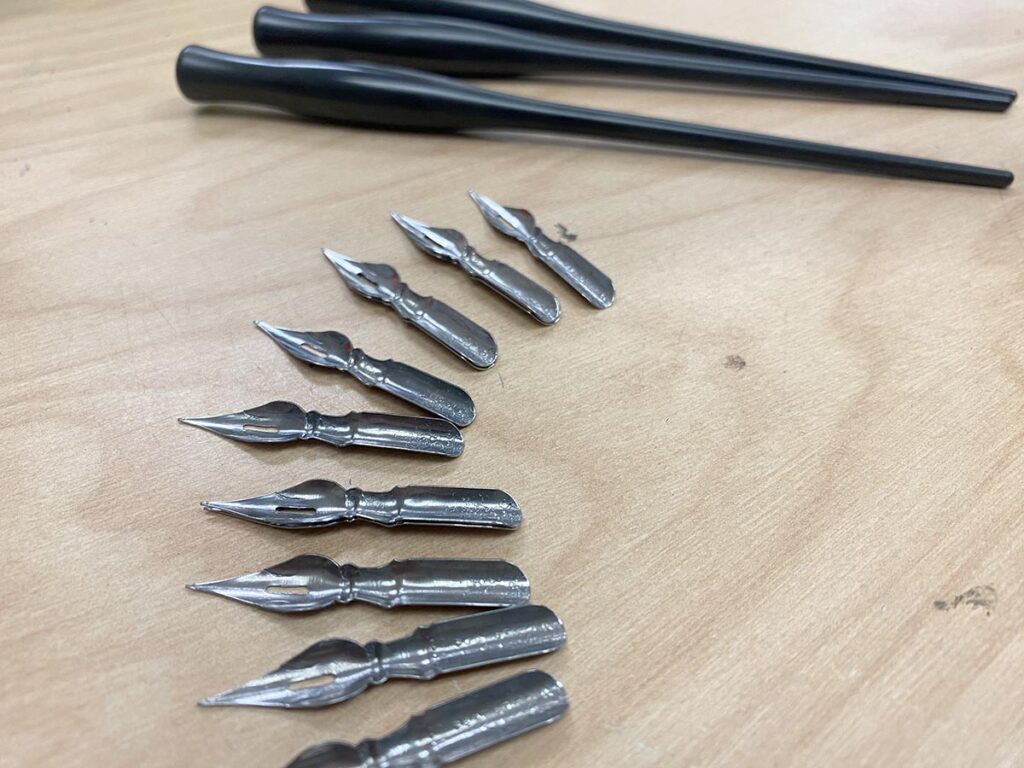
Cursive: A Lost Art Rediscovered
Cursive writing is another hidden treasure! Some districts removed or displaced cursive from the curriculum. Plus, with the increase in typing and digital assignments, cursive was simply forgotten. However, we are so glad cursive is making a comeback! Recent studies found that practicing cursive handwriting can have a positive impact on retention and comprehension. It requires more brain activity to connect the letters in a continuous flow and it shows children as they write how letters and sounds come together. Reignite your love for cursive with the activities below!
Cursive Activities:
- Artist Signature
Students learn how to write their name in cursive to create their own artist signature. They can practice their signatures by signing each others’ sketchbooks, much like a yearbook signing. Students replicate their official signature on their next finished piece! - Short Story Illustration
Students write and illustrate a short story. Use cursive to exaggerate certain sounds, words, or phrases in the text. - Artist Love Letters
Students write heartfelt love letters to their favorite artist, past or present, in cursive. - Reflective Journaling
Students journal to reflection prompts in their sketchbooks using cursive. This practice combines self-expression, writing skills, and reflection.
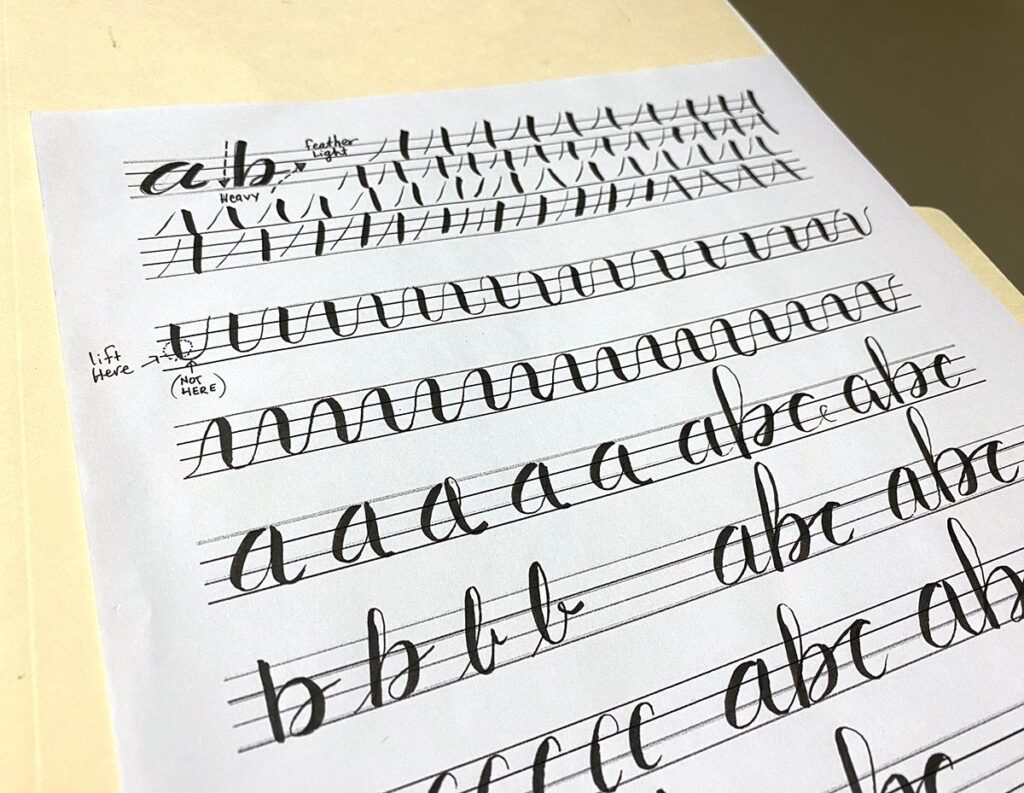
Typography: A Bridge Between Tradition and Technology
In the realm of art education, typography emerges as a dynamic and essential component of modern design. It acts as a bridge and connects the rich traditions of handwritten communication with the digital age of expression. Typography goes beyond fonts and styles and can evoke expression and emotion. Understanding typography is pivotal for art educators seeking to empower their students with versatile visual communication skills. For more ways to infuse typography into your curriculum, try the Integrating Graphic Design Collection in FLEX Curriculum or enroll in the Studio: Graphic Design course.
Typography Activities:
- Typography Posters
Students create visually striking posters using typography as the primary element. Experiment with fonts, sizes, and colors to convey emotion or deliver a powerful message. - Digital Love Letters
Students compose digital love letters, using typography to enhance the visual appeal and emotional impact. This activity combines the art of typography with the sentiment of traditional love letters. - Positive and Negative Shape Collages
Introduce students to Robert Indiana to see how words can become imagery. Students cut out letters and words from magazines or printed materials to create typographic collages. Focus on positive and negative space, shape, and balance. - Text Portraits
Students compose portraits using only text. Create value and depth with thicker and thinner fonts and vary the size and number of layers.
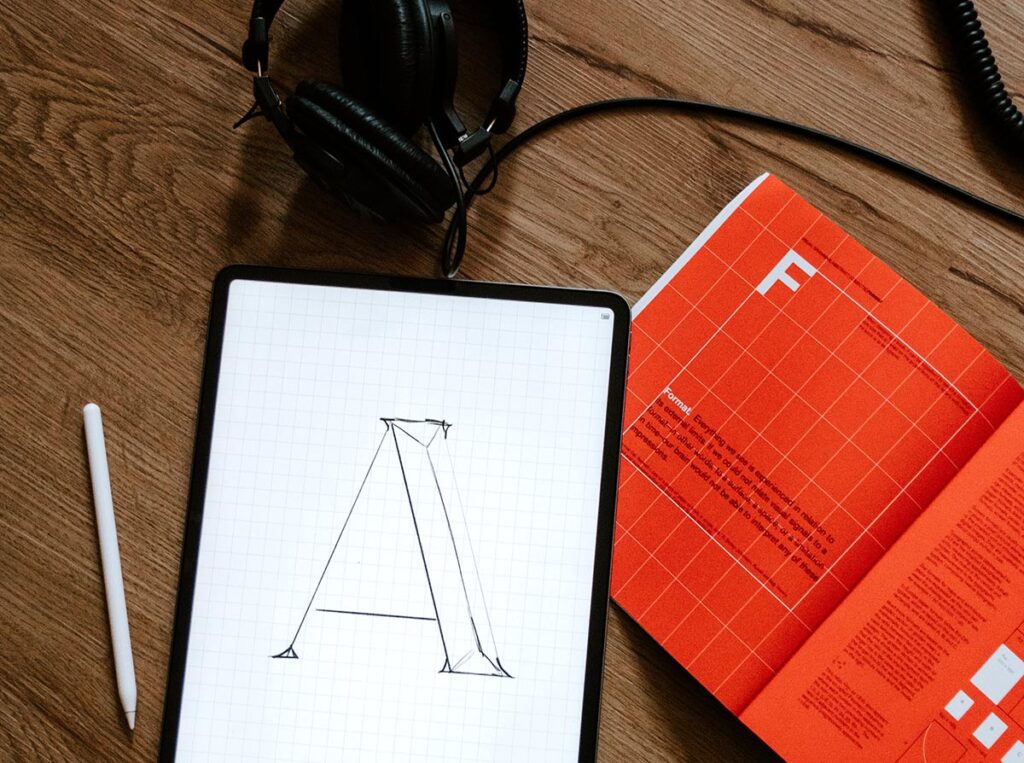
We cherish calligraphy, cursive, and typography because each offers unique avenues for expressing love and admiration. From the soothing strokes of calligraphy to the timeless elegance of cursive and the dynamic versatility of typography, these skills and art forms can enrich our curriculums. Nurture these delicate traditions to instill in your students appreciation and culture. Encourage a new generation of calligraphers, cursive writers, and typographers to share their stories, express their love, and leave their mark on the world, one beautifully crafted word at a time.
How can you use love letters to enhance your curriculum?
Share what you and your students love about calligraphy, cursive, and typography!
Magazine articles and podcasts are opinions of professional education contributors and do not necessarily represent the position of the Art of Education University (AOEU) or its academic offerings. Contributors use terms in the way they are most often talked about in the scope of their educational experiences.
